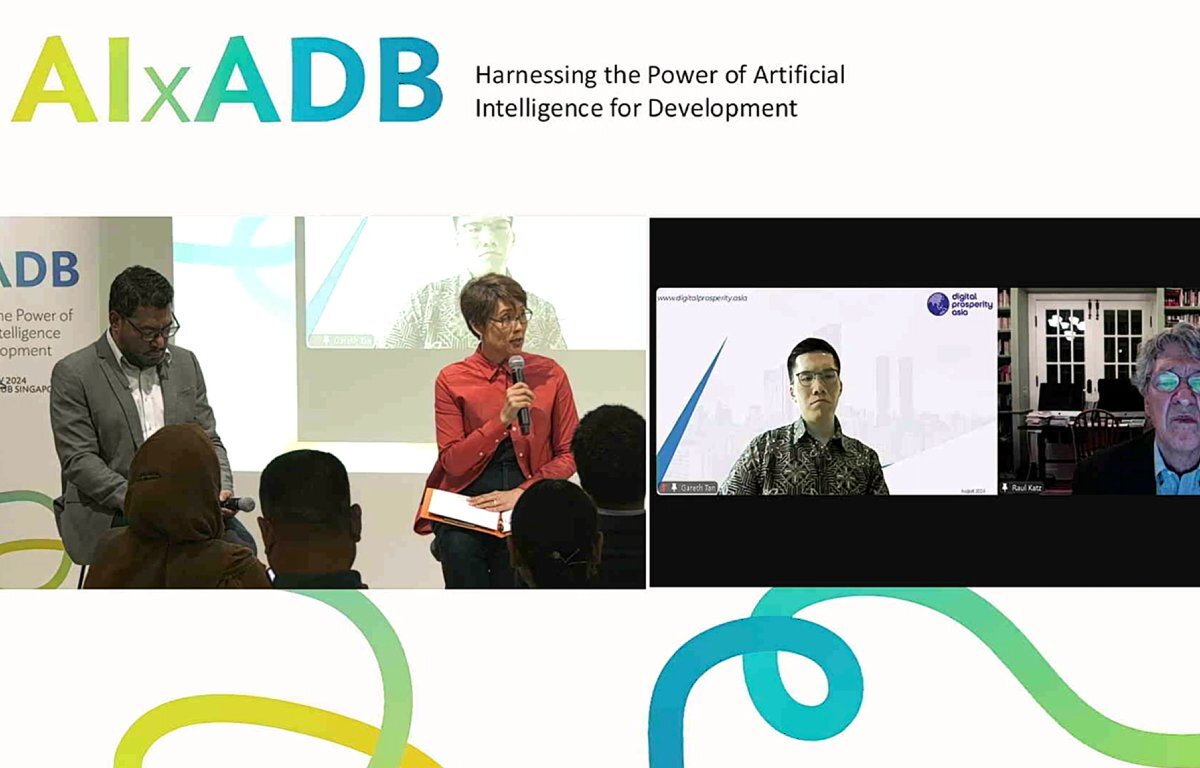
Artificial Intelligence has emerged as a truly pervasive technology, integrated across all industries, with AI-related applications now registered in all 35 technology fields. The economic impact of AI manifests in two primary ways: through direct spending by both the public and private sectors, and through spillover effects that ripple through supply chains, boost productivity, and create new opportunities for innovation across sectors.
The scale of this transformation is significant. AI is projected to contribute $19.9 trillion to the global economy by 2030, accounting for 3.5% of global GDP in that year. In the Asia-Pacific region, this transformation is already well underway. According to the International Data Corporation’s latest Worldwide AI and Generative AI Spending Guide, investments in AI and Generative AI (GenAI) in the region are expected to reach $110 billion by 2028, growing at a compound annual growth rate (CAGR) of 24.0% from 2023 to 2028.
However, the path to realising this economic potential faces several challenges. While AI adoption is gaining momentum—particularly through cloud service providers offering scalable, cost-effective solutions—not all sectors are equally prepared to benefit from an AI-integrated economy. Micro, small, and medium enterprises (MSMEs), organisations with limited digital literacy, and certain sectors that lag behind in digital transformation are at a disadvantage.
To address these issues and realise the full potential of an AI-integrated economy, while ensuring equitable distribution of AI’s economic benefits across the region, a panel of industry experts convened to discuss how companies of different sizes can leverage AI for growth, how businesses can ensure responsible innovation and AI deployment, and what regulatory frameworks or initiatives are needed to enhance AI readiness across the region.
Moderator and Panellists
- Rithesh Shetty, Associate Director, Boston Consulting Group
- Raul Katz, Director of Business Strategy Research at Columbia Institute for Tele-Information, Columbia University; President of Telecom Advisory Services
- Gareth Tan, Senior Associate Director and Technology Team Lead (Southeast Asia), APCO; Partnerships Lead (Asia-Pacific), Coalition for Digital Prosperity for Asia (DPA)
- Ming Tan, Founding Executive Director, Tech For Good Institute
Key Takeaways:
1. AI adoption across all sectors and companies of different sizes Is key to unlocking maximum economic potential.
While AI adoption is rapidly increasing in tech-related industries, many sectors and smaller enterprises are still falling behind in utilising AI. This disparity results in significant missed opportunities for economic growth. For example, while industries such as software, information and communications, financial services, and logistics are witnessing high levels of AI integration, manufacturing and agriculture present considerable untapped potential for AI-driven GDP growth. In Southeast Asia, MSMEs account for 97% of businesses and employ 67% of the workforce. However, their limited capacity to invest in digital transformation—especially in areas like upskilling and cybersecurity—hinders effective AI adoption. Addressing these challenges is essential. Without boosting AI adoption in these lagging sectors and smaller businesses, the full economic potential of AI will remain unrealised, stifling overall growth and innovation in the region.
2. The implementation of new technologies must prioritise inclusivity and social responsibility.
As businesses embrace AI, they must navigate the complex challenge of driving innovation while ensuring that their advances benefit society equitably. This challenge is particularly evident in Southeast Asia’s digital economy, where digital economy companies—from emerging startups to established public entities—tend to focus primarily on maintaining operational licences rather than pursuing broader social objectives. However, this mindset is shifting, as regulatory authorities increasingly advocate for a balance between innovative growth and risk management. Responsible AI adoption demands a broader perspective that considers all stakeholders. Large AI providers, while instrumental in establishing ethical standards, must demonstrate to their investors and shareholders that sustainable, inclusive practices are integral to creating lasting value. This approach is especially critical for MSMEs, which form the backbone of Southeast Asia’s economy but often struggle to access the resources needed for digital transformation. Beyond meeting basic compliance requirements for data protection and cybersecurity, companies must also respond to an evolving stakeholder landscape that demands more comprehensive social responsibility.
3. To maximise the economic contributions of AI, governments must adopt a comprehensive and adaptive approach to governance.
This begins with strengthening human capital through enhanced education and training programmes to prepare the workforce for the challenges and opportunities of an AI-integrated economy. Continuous upskilling is vital not only for individuals in the digital economy but also for the broader workforce, ensuring they meet the evolving skill requirements driven by AI adoption across various sectors. Governments should also ensure that regulations related to data protection, cybersecurity, and intellectual property rights are updated for the digital age. Moreover, industry expertise plays a crucial role. By empowering sectoral regulators who understand the unique challenges and opportunities of their industries, governments can create more targeted and effective oversight mechanisms. This approach must be coupled with a commitment to learning and iteration, as exemplified by policy sandboxes across Southeast Asia that enable controlled experimentation and mutual learning between regulators and businesses. Finally, in our interconnected world, enabling interoperability across jurisdictions becomes paramount. Through regional frameworks and international technical standards, governments can foster an environment where AI innovation addresses global challenges while driving economic growth. This comprehensive approach ensures that governance structures evolve alongside technological advancements, fostering innovation while maintaining necessary safeguards.



